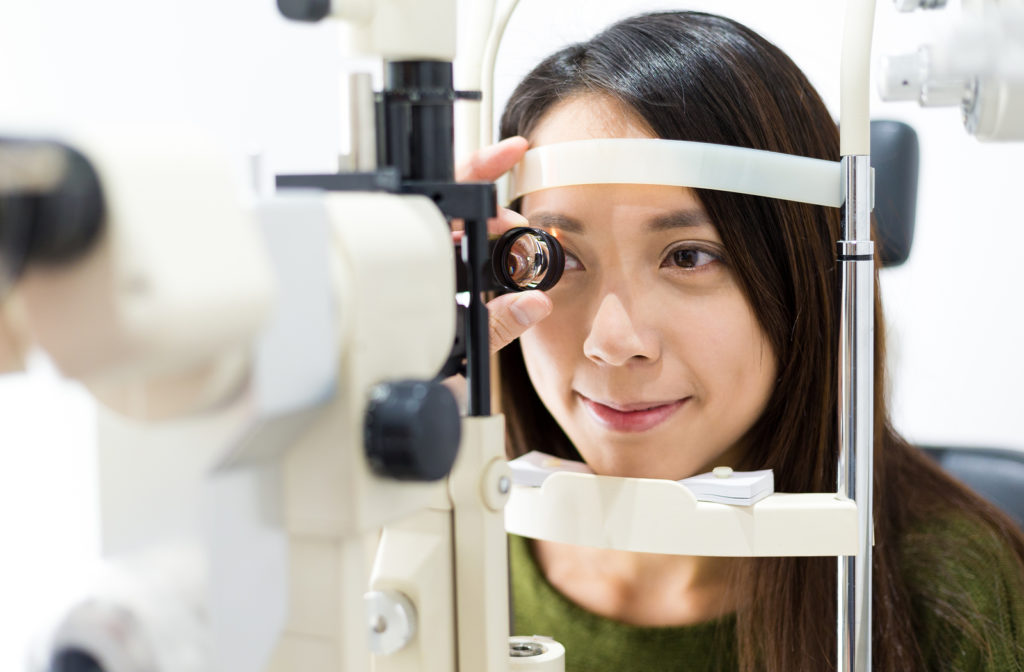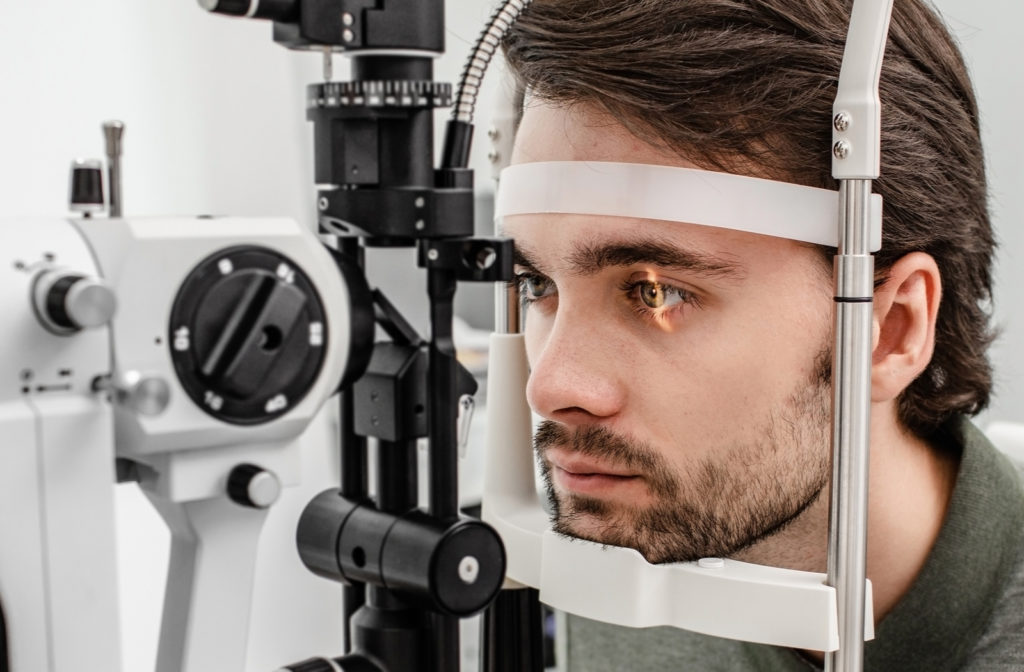Your optometrist conducts a thorough evaluation during your annual eye exam, but what can this examination help diagnose?
There are many different conditions your eye doctor can detect. Let’s look at some of the most common. Continue reading to learn more about what a comprehensive eye exam can uncover.
What is a Comprehensive Eye Exam?
A comprehensive eye exam consists of different tests for your optometrist to assess your eye health and vision. The goal of these tests is to identify any visual issues or eye disease. Some people assume an eye exam is just a vision screening, but it’s much more.
Your optometrist looks at the entirety of your eye to uncover any problems. After reviewing their results, your eye doctor can recommend the appropriate action for your unique needs. Depending on your optometrist’s findings, this may include a glasses or contact lens prescription or specific treatments for eye disease.
How Often Do You Need an Examination?
An annual examination is ideal for adults, especially seniors. An appointment every year can help detect any potential problems that may be new. What happens during this exam?
What Happens During an Eye Exam?
Many tests are taken during your eye exam to get a picture of your eye health. Your optometrist will decide the most appropriate tests, but your exam will include:
Your eye doctor has access to top-of-the-line technology to help examine your eyes. With these tests, what can your optometrist detect during an eye exam?
What Can a Comprehensive Eye Exam Help Detect?
There are a variety of tests performed during a comprehensive eye exam, and your optometrist can diagnose many different conditions. Some of these common conditions include:
- Refractive errors
- Glaucoma
- Dry eye disease
- Retinal conditions
- Diabetes
Refractive Errors
Someone has a refractive error when they struggle to see clearly from certain distances. Vision appears blurry because light can’t focus when it enters your eye. Not every refractive error is the same; they vary by type and severity.
Common refractive errors include:
Your optometrist has several options for treatment depending on your unique condition. Many people can obtain improved vision with glasses or contact lenses.
Your eye doctor can fit you with contacts during a contact lens exam and fitting. They can recommend standard or specialty contacts.
Glaucoma
Glaucoma is a group of eye diseases that damage your optic nerve. Over 60 million people have this disease worldwide, and many don’t notice until their vision is affected. Glaucoma can develop painlessly and with little to no symptoms until vision loss occurs.
Vision loss from glaucoma is irrecoverable, so it’s important to have regular eye exams to catch this condition as early as possible. Vision loss can be slowed or prevented with help from your optometrist.
A common sign of glaucoma is an increase in intraocular pressure (IOP), but this isn’t present in every form of this disease. Some of the common types of glaucoma include:
Dry Eye Disease
Dry eye disease is a condition where your tears can’t effectively lubricate your eyes. When there are issues in your tear film, it can result in dry, irritated eyes. Besides being a nuisance, dry eye disease can damage your eye’s surface and cause other symptoms.
Common signs of dry eye disease include:
- Eyes that itch, burn, or sting
- Light sensitivity
- Eye redness
- Foreign object sensation
- Difficulty wearing contact lenses
- Watery eyes
- Blurred vision
- Eye fatigue
Dry eye disease can happen for many different reasons. This condition mainly occurs due to decreased tear production, increased tear evaporation, or meibomian gland dysfunction. There are several treatment options available if you have dry eyes.
Retinal Conditions
Your retina is vital for your vision; it lines the back of your eye and receives incoming light, which makes the images you see every day. Your optometrist examines your retina during an eye exam to look for possible issues. There are several retinal diseases, and early diagnosis can protect your vision.
Some common retinal diseases include:
- Retinal tear
- Retinal detachment
- Macular hole
- Diabetic retinopathy
- Macular degeneration

Diabetes
Diabetic retinopathy is a common condition many people with diabetes develop. Having this condition may sometimes be the first indicator someone has diabetes.
Besides diabetic retinopathy, diabetes raises your risk of developing several eye conditions, including:
Through careful examination, your optometrist can evaluate your eye health and recommend ways for you to manage your diabetes and protect your vision. Your eye doctor is here to help, no matter your needs.
Regular Eye Exams Can Protect Your Eye Health & Vision
These are only some common conditions a comprehensive eye exam can help detect. Regular eye exams are the best way to maintain and protect your vision. If you need an annual examination, contact your optometrist.



